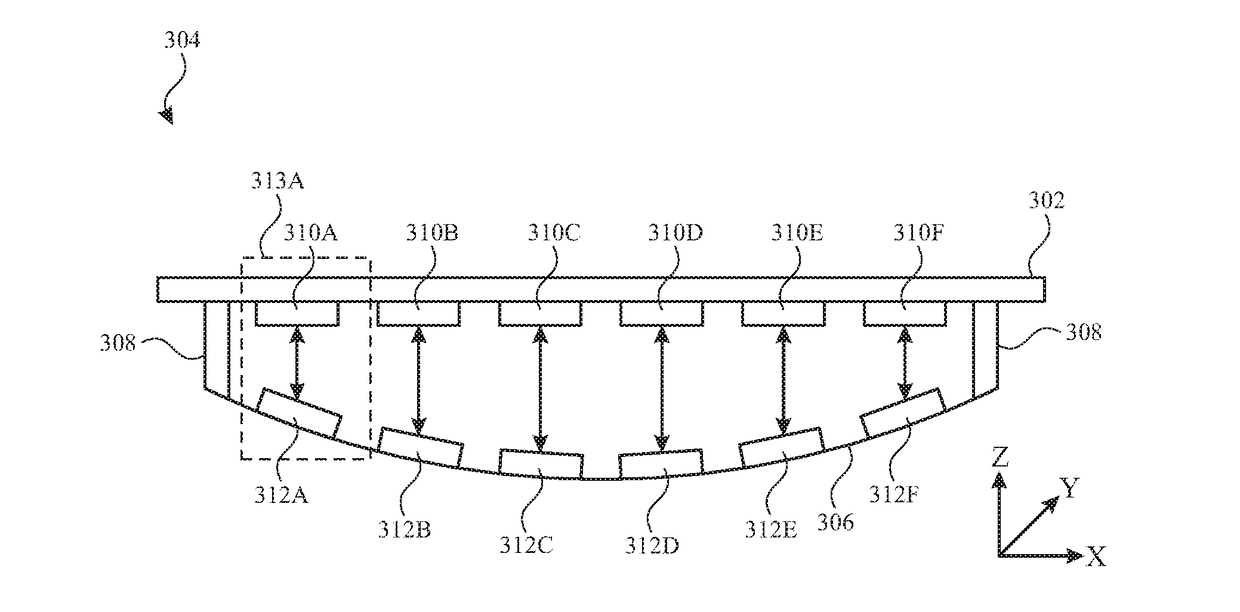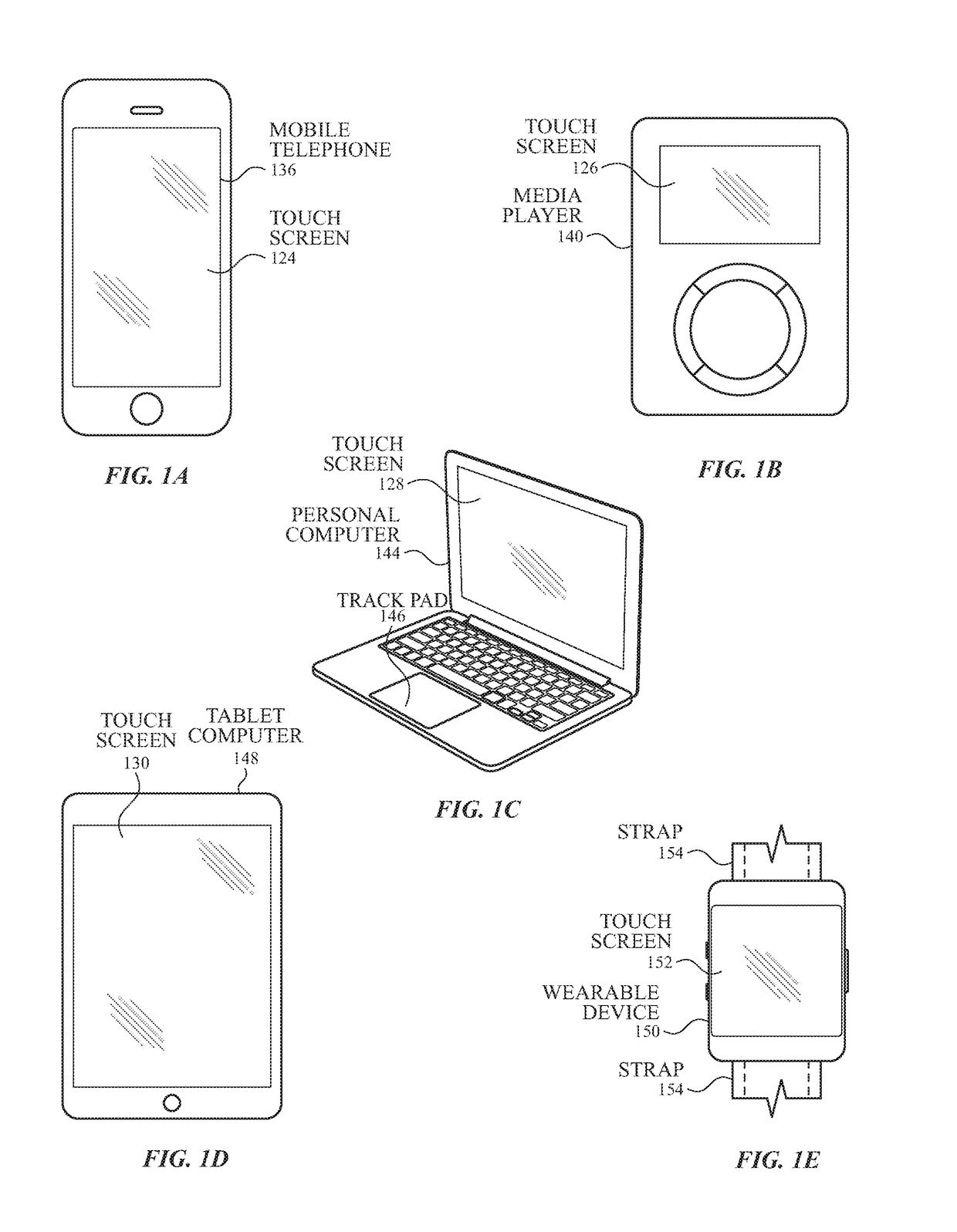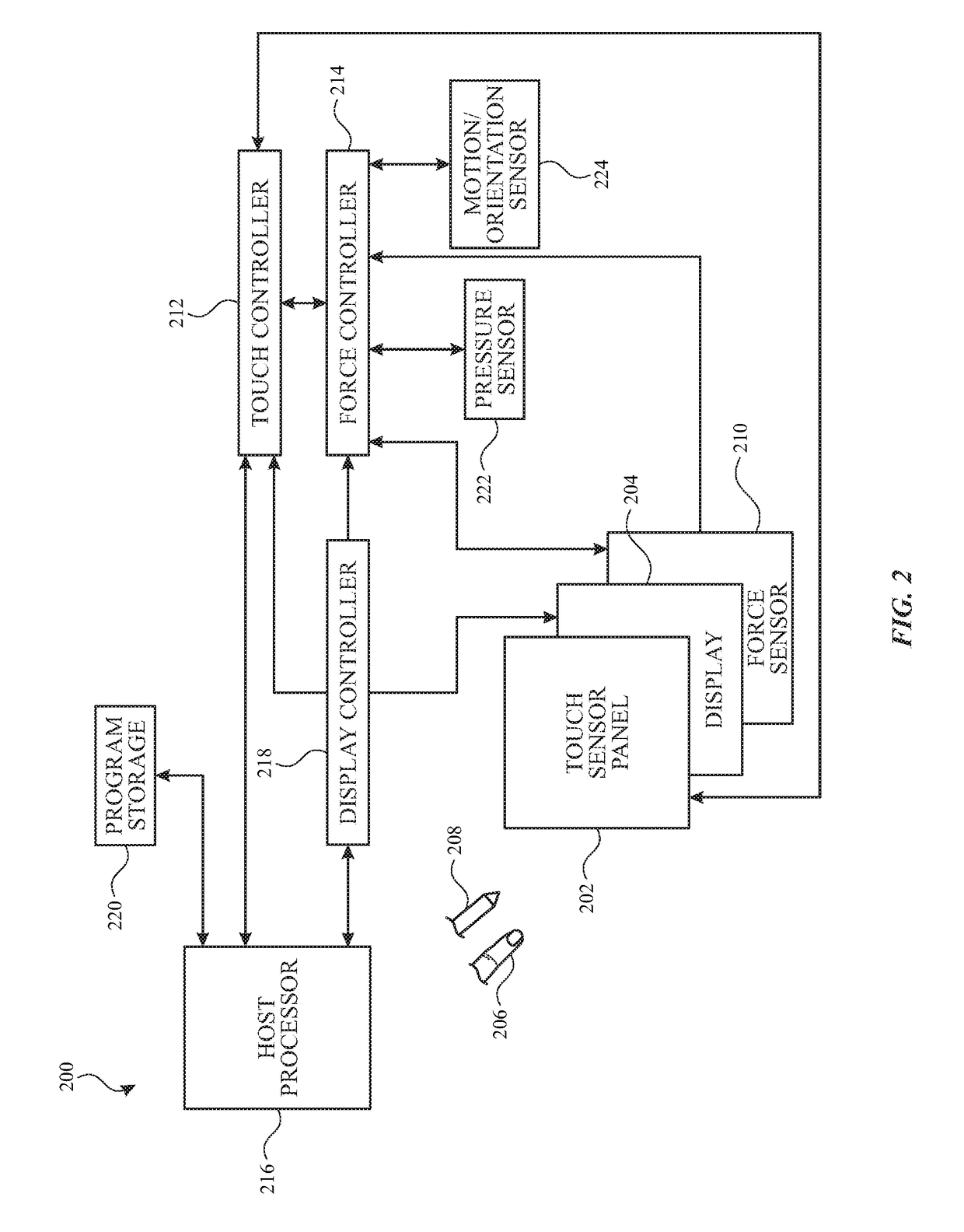Pressure compensation for force-sensitive touch screen
a touch screen and pressure compensation technology, applied in the direction of instruments, computing, electric digital data processing, etc., can solve the problems of inaccurate force measurement of applied user force, degrade the performance of etc., and achieve the effect of degrade the performance (e.g., accuracy) of the force sensing capabilities of electronic devices
- Summary
- Abstract
- Description
- Claims
- Application Information
AI Technical Summary
Benefits of technology
Problems solved by technology
Method used
Image
Examples
Embodiment Construction
[0015]In the following description of examples, reference is made to the accompanying drawings which form a part hereof, and in which it is shown by way of illustration specific examples that can be practiced. It is to be understood that other examples can be used and structural changes can be made without departing from the scope of the disclosed examples.
[0016]This relates to pressure compensation for force-sensitive touch screens according to examples of the disclosure. Changes in pressure, particularly transient, internal pressure changes in an electronic device due to an object applying force to a surface of a touch screen of the electronic device, can degrade performance (e.g., accuracy) of the force sensing capabilities of the electronic device. For example, when a finger presses a force-sensitive touch screen of a sealed electronic device, the applied force can increase internal pressure of the sealed electronic device until internal pressure can equalize. The increased inte...
PUM
 Login to View More
Login to View More Abstract
Description
Claims
Application Information
 Login to View More
Login to View More - R&D
- Intellectual Property
- Life Sciences
- Materials
- Tech Scout
- Unparalleled Data Quality
- Higher Quality Content
- 60% Fewer Hallucinations
Browse by: Latest US Patents, China's latest patents, Technical Efficacy Thesaurus, Application Domain, Technology Topic, Popular Technical Reports.
© 2025 PatSnap. All rights reserved.Legal|Privacy policy|Modern Slavery Act Transparency Statement|Sitemap|About US| Contact US: help@patsnap.com



